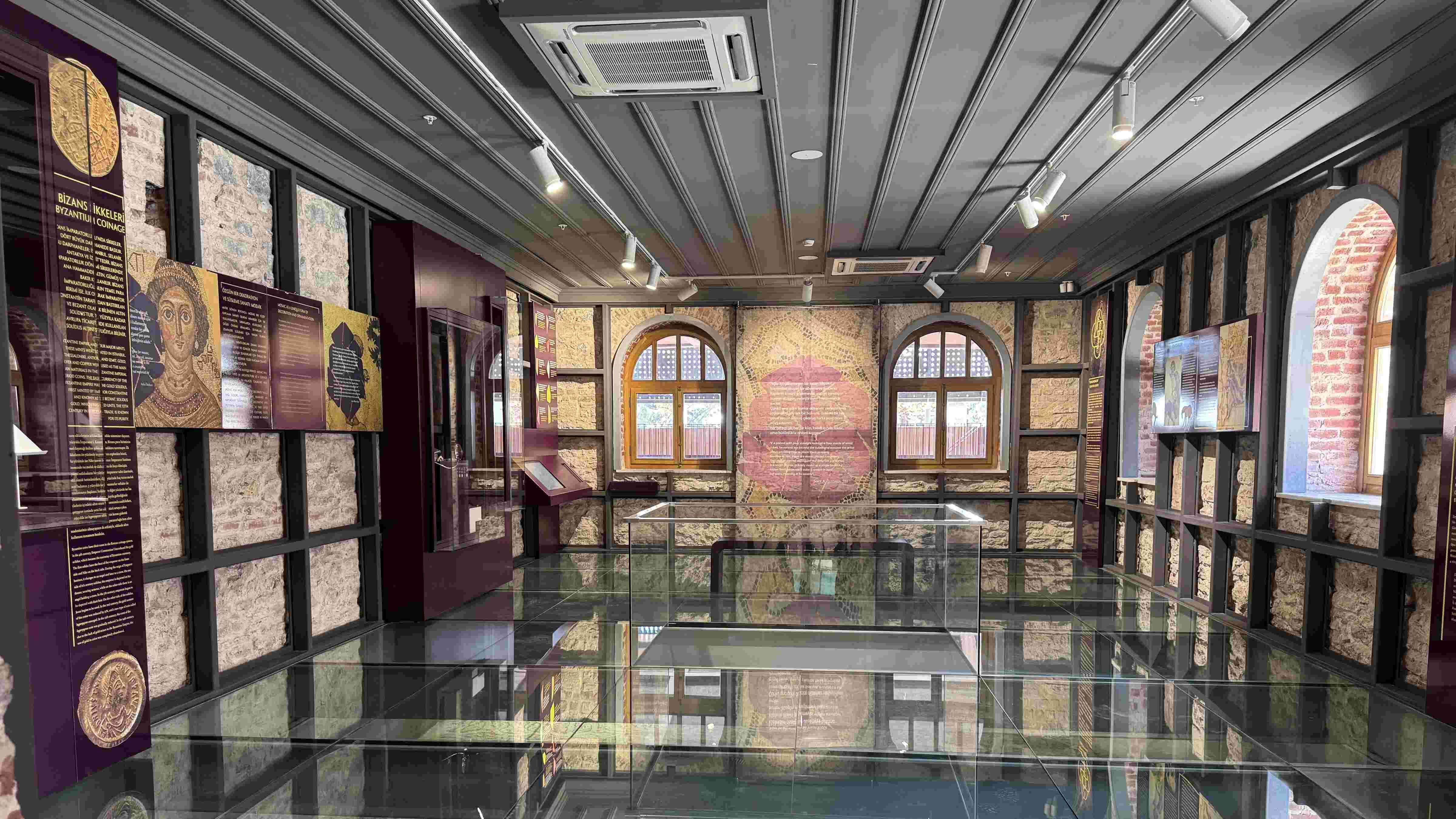
An ancient Roman-Byzantine mosaic discovered during restoration work in a historical municipal building in Istanbul’s Zeytinburnu district has been transformed into a cultural center and is now open to the public as the Zeytinburnu Mosaic Museum.
Originally constructed in 1893 as a military hospital, the building later served various functions, including as Zeytinburnu Municipality’s main office.
“When we discovered it, we were incredibly excited — it was a completely new find,” Zeytinburnu Mayor Ömer Arısoy told the state-run Anadolu Agency. “It was no longer feasible or acceptable to use this place as a surface parking lot.”
The mosaic was initially found in 2014 during a major restoration project after the municipality moved its headquarters to a new location. The mosaic, located on the floor of a small room, was first opened to visitors in 2018. When Arısoy took office in 2019, he commissioned exploratory excavations under the supervision of the Istanbul Archaeology Museums, suspecting that the mosaic might extend beyond the room.
“In addition to the continued mosaic pavement, a marble sarcophagus was uncovered containing the remains of two individuals, a man estimated to be 40–50 years old and a woman around 30–40,” Arısoy said. “Carbon-14 analysis dates the burial to between 220 and 380 A.D.”
To preserve the discovery, a new protective structure was erected over the excavation site, which also revealed a burial chamber. The restored original marble elements are now part of the museum, officially opened to the public in November 2023.
Now serving as a museum, library, exhibition space, café and restaurant, the building is “a brand-new living space” for the Zeytinburnu community.
One of eight in Türkiye
The Zeytinburnu Mosaic Museum is one of only eight mosaic museums in Türkiye. What makes it different, Arısoy said, is that the mosaic is displayed in situ — right where it was discovered — and it is the largest mosaic found outside the ancient walls of Istanbul.
“The mosaic and accompanying burial chamber have contributed valuable new information to Istanbul’s historical record,” Arısoy said. “Experts and historians are continuing to study the site to better understand its original function. We hope future research will offer greater clarity.”
He emphasized Zeytinburnu’s importance as one of Istanbul’s key districts for the past 25 years, noting that the discovery adds both historical and cultural value to the area.
“This mosaic has contributed significantly to Zeytinburnu’s journey. It is an exceptional structure dating back to the third or fourth century A.D., and the museum now has international importance,” he said.
The former parking area adjacent to the museum has been converted into a cultural space called Kazlıçeşme Sanat, a multi-purpose venue that now hosts exhibitions, events, and culinary offerings for visitors.
“We created a small complex. Visitors can tour the museum, attend an exhibition, and enjoy a meal — all in one place. Feedback from local residents has been overwhelmingly positive,” he said.
The museum features a 190-square-meter mosaic floor from the late Roman–early Byzantine period, along with a marble sarcophagus, a casket-style tomb, and human skeletons. In collaboration with the Istanbul Archaeology Museums, the site has been meticulously restored and curated.
Displayed artifacts include tesserae, ceramics, and other archaeological finds, while DNA analysis of the 1,750-year-old human remains adds a scientific dimension to the museum experience.
Arısoy highlighted that the mosaic would not have been discovered had the building not been a registered historic structure, which required manual excavation during the restoration.
“If machine excavation had been used, we likely would have missed it,” he said. “We are always open to new discoveries, especially in Istanbul, where surprises like this are not so uncommon.”